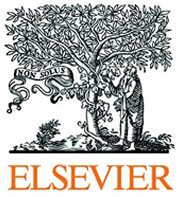Available online 8 January 2014
In Press, Corrected Proof — Note to users
Predicting the molecular interactions of CRIP1a–cannabinoid 1 receptor with integrated molecular modeling approaches
- a Department of Medicinal Chemistry, Virginia Commonwealth University, Richmond, VA 23298, USA
- b Institute for Structural Biology and Drug Discovery, Virginia Commonwealth University, Richmond, VA 23298, USA
- c Center for the Study of Biological Complexity, Virginia Commonwealth University, Richmond, VA 23298, USA
- d Department of Pharmacology and Toxicology, Virginia Commonwealth University, Richmond, VA 23298, USA
Abstract
 Cannabinoid receptors are a family of G-protein coupled receptors that are involved in a wide variety of physiological processes and diseases. One of the key regulators that are unique to cannabinoid receptors is the cannabinoid receptor interacting proteins (CRIPs). Among them CRIP1a was found to decrease the constitutive activity of the cannabinoid type-1 receptor (CB1R). The aim of this study is to gain an understanding of the interaction between CRIP1a and CB1R through using different computational techniques. The generated model demonstrated several key putative interactions between CRIP1a and CB1R, including the critical involvement of Lys130 in CRIP1a.
Cannabinoid receptors are a family of G-protein coupled receptors that are involved in a wide variety of physiological processes and diseases. One of the key regulators that are unique to cannabinoid receptors is the cannabinoid receptor interacting proteins (CRIPs). Among them CRIP1a was found to decrease the constitutive activity of the cannabinoid type-1 receptor (CB1R). The aim of this study is to gain an understanding of the interaction between CRIP1a and CB1R through using different computational techniques. The generated model demonstrated several key putative interactions between CRIP1a and CB1R, including the critical involvement of Lys130 in CRIP1a.
Graphical abstract
Abbreviations
- CB1R, cannabinoid 1 receptor;
- CB2R, cannabinoid 2 receptor;
- Cnrip1, cannabinoid receptor interacting protein gene;
- CRIP1a, cannabinoid receptor interacting protein 1a;
- CRIP1b, cannabinoid receptor interacting protein 1b
Keywords
- CRIP1a;
- Cannabinoid receptor;
- Protein threading;
- Protein–protein docking;
- CB1R
Figures and tables from this article:
-
Figure 2.
Alignment of CRIP1a with RhoGDI 2 (PDB ID 1DS6 chain B), the best scoring template. The RhoGDI 2 secondary structure and the predicted (consensus) secondary structure for CRIP1a are shown in red above and below the sequence alignment, respectively, S: β-sheet and H: helix.
-
Figure 3.
Best ranking CRIP1a model using RhoGDI 2 as a template (PDB ID 1DS6 chain B). (a) 3D structure constructed for CRIP1a β-sheets are in yellow and loops are shown in green. (b) Superimposition of backbone atoms of CRIP1a model (red) and the RhoGDI 2 crystal structure (blue).
-
Figure 4.
Ramachandron plots for the best full model of CRIP1a generated using RhoGDI 2 as a template (generated by MOLPROBITY).57
-
Figure 8.
Complementarity of electrostatic potentials at the interface of the predicted CRIP1a–CB1R complex. In the middle, CRIP1a and CB1R C-terminus are aligned in a pre-complex position to better show the spatial complementarity of electrostatic potentials of the molecules. Positive potential is shown as blue and negative potential is shown as red. To the left, CRIP1a is shown; the CB1R binding site is enclosed in a back dashed rectangle. To the right, the binding interface of the C-terminus of CB1R is shown. It can be clearly seen the complementarity of electrostatic potentials at the interface of the complex, as the area of the positive potential (blue) on CRIP1a faces the negative potential (red) on CB1R C-terminus and vice versa.
Published by Elsevier Ltd.
Although corrected proofs do not have all bibliographic details available yet, they can already be cited using the year of online publication and the DOI , as follows: author(s), article title, journal (year), DOI. Please consult the journal’s reference style for the exact appearance of these elements, abbreviation of journal names and use of punctuation.
When the final article is assigned to an issue of the journal, the Article in Press version will be removed and the final version will appear in the associated published issue of the journal. The date the article was first made available online will be carried over.















